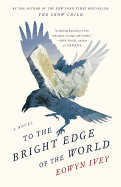
Alaskan author Eowyn Ivey reintroduces the fictional Wolverine River Valley of her debut, The Snow Child, in To the Bright Edge of the World. Instead of isolated homesteaders of the 1920s, this novel follows the adventure of an 1885 expedition into Alaskan Territory. What the novels share are vivid depictions of the natural elements' harsh brutality and a mystical, folkloric component.
The story of the expedition is framed by modern-day correspondence between Montanan Walter Forrester and the curator of the historical museum in Alpine, Alaska. Forrester is urging the museum to review the memorabilia from his great-uncle Colonel Allen Forrester's remarkable trek through what is now Alpine. As they delve into the records of the colonel and his wife, Sophie, they piece together a story of horrific physical trials, vast and cold beauty, and the changes brought by the opening of the territory.
Newly pregnant Sophie, who traveled from Boston to Vancouver Barracks in Washington Territory with her husband, awaited his return. Irritated by her confinement, she rejected social expectations and immersed herself in the study of photography. While Sophie experienced her own challenges, her chapters are welcome departures from the harsh expedition's narrative.
Ivey populates her novel with rich supporting characters, including an enigmatic Indian woman, a mysterious raven and the colonel's individualistic team members. A story of love and commitment, The Bright Edge of the World is spellbinding Pacific Northwest historic fiction. --Cheryl Krocker McKeon, manager, Book Passage, San Francisco

